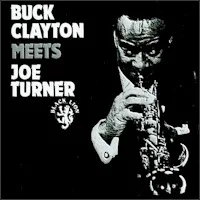Bitrate: MP3@320K/s
Time: 71:47
Size: 164.3 MB
Styles: Swing
Year: 2005
Art: Front
[4:15] 1. No One Knows
[2:23] 2. Secret Agent Man
[3:29] 3. Beautiful People
[2:11] 4. Triste Sera
[4:31] 5. Whose Side Are You On
[3:44] 6. No Worries
[3:47] 7. Vedrai Vedrai
[3:44] 8. Too Darn Hot
[3:41] 9. Un Bimbo Sul Leone
[2:17] 10. That Mellow Saxophone
[3:13] 11. Un Bimbo Sul Leone
[3:36] 12. Whose Side Aare You On (Live)
[2:50] 13. Cheek To Cheek (Live)
[2:35] 14. Pizza Gangster (Live)
[3:45] 15. Small Town (Live)
[3:25] 16. The Beautiful People (Live)
[4:11] 17. No One Knows (Live)
[5:43] 18. That Mellow Saxophone (Live)
[3:50] 19. Un Bimbo Sul Leone (Live)
[4:28] 20. Whose Side Are You On (Live)
The most cursory glance down the roster of America’s most popular troubadours, immediately reveals one prime and inescapable fact- the majority are of Italian-American extraction. Caruso, Sinatra, Como, Prima, Monte, Bennett, Darin…the list seems endless. “Why”, many an eager bobby-soxer has asked “are so many of the great singers Italian?” Why, indeed? The answer is, of course, to step into the history and folkways of a people that it would take thousands of words to explain. But, we can briefly say, it’s because of their warm-hearted, unrestrained humour and passion for life. As a part of this good company we can find “THE GOOD FELLAS”. Better known as the “GANGSTERS OF SWING”, dressed in old fashioned, strictly Italian made, double breast Capone suites, wearing two tone shoes, laughing at life like everyone does deep down in the land of pizza and mandolino. To be a “good fellow” means to be a true gentleman, loyal and respectful of strong heritage and traditions., It means to smell of the full Italian flavour, while always hungry for a lady’s kiss among the scene of a Neapolitan moonlight. What they do best is the well-known, truly genuine, Italian way of entertaining known the world over. Swingin and jokin’ all the time with the audience in that half Italian, half English, macaroni language. This band truly swings from “Oh Marie”, “Tu vuo fa l’americano”(You wanna be American) to Basie’s “Whirly Bird”, and from Haley’s “A rockin’ little tune” to Lou Monte’s Italian version of Fats Domino’s classic Rock’n’Roll “I’m Walkin”. They walk the junction between Italian American and Afro American music, follow the steps of the giants of swing era, spacing from a shuffle beat to a Philly houserock to Texas blues. Like many of the Italian citizens of the World War II age, the GOOD FELLAS feel the “American Dream”, falling in love with the American brashness, cleverness, then impossible madness, but never really thinkin’ to leave the country of sea and sun, their food, their roots. Lean against his big bass, he’s the boss, Mr. LUCKY LUCIANO, created his own way of swingin’ way back in 1993, always guarded by his “shadow”, boxeur/drummer BUM BUM LA MOTTA. With an experience of more than 100 gigs every year, these great musicians entertained the audiences of England, Germany, France, Switzerland, Wales, Belgium, Slovenjia and every corner of their beautiful Country. Over the Rockin’ scene, they blew the fuse of a spectacular audience at “THE RHYTHM RIOT” at Camber Sands, UK, and rocked the house at “SUMMER JAMBOREE” in Senigallia, obtaining massive compliments as top international act. It’s been a pleasure, during the years of their activity to be backing international stars such as JACK SCOTT, BLUE LOU MARINI, DAVE TAYLOR, GRAHAM FENTON, SCREAMIN’ LORD SUTCH, CHARLIE GRACIE, BIG JAY McNEELY, and they work very often with long time friend fellow musician RAY GELATO. Together, they recorded two albums; GELATO ALL’ITALIANA (1996) and GANGSTERS OF SWING (1998). The GOOD FELLAS have been featured several times on top TV shows and reviews, and recently played a role in the major Italian film “I FOBICI” that includes the beauty of international star SABRINA FERILLI. Fall 1999; the Fellas played the most important show in Italy, featuring the famous comedians ALDO, GIOVANNI E GIACOMO. The show, “Tel chi el Telùn” has been attended by more than 80,000 people during 52 days at the No Limits Hall in Milano, and seen by over 10 million per night on TV. The “SALUTE!” Cd was released in the year 2k. In 2002 Mr. Lucky is the music director for Aldo, Giovanni and Giacomo’s brand new motion picture movie “La leggenda di Al, John and Jack”, based on a gangster story, New York 1959. The fellas play 5 tunes of which 3 Lucky’s originals. Again in that same year and the following, they play their music on a superb new Variety show headlined by famous comedian Paolo CEVOLI, aka L’Assessore PALMIRO CANGINI, called “THE RONCOFRITTO SHOW”, which in 2003 became a theatrical comedy show “MOTONAVE CENERENTOLA” starring Russian beauty and Tv star NATASHA STEFANENKO, with over 120 replicas. 2004, the cd “SONGS FOR AL, JOHN AND JACK” hit the market. The new year 2005 began with a full swingin feeling. The band performs at “UMBRIA JAZZ WINTER”, main Italian jazz festival, selling out every show. Therefore, Carlo Pagnotta, promoter of the event, signs the band immediately for the forthcoming 2005 Summer edition of the Festival! April 2005, the latest release: OLLY MEETS THE GOOD FELLAS, starring guest singer Olly from ska core Italian top act SHANDON. A colourful, miscellania of Italian ballads, jazz tunes, early sixties soundtracks stuff and the unbelievable a-la-fellas versions of Marylin Manson and Queens of the Stone Age modern rock tracks! Wear your best suite, put on your dancin’ shoes, grab your girl and bring your best smile; and WATCH OUT, the GANGSTERS OF SWING are back in town!
Olly Meets The Good Fellas




















